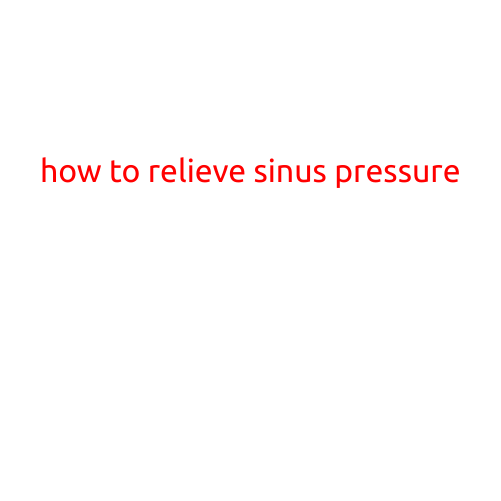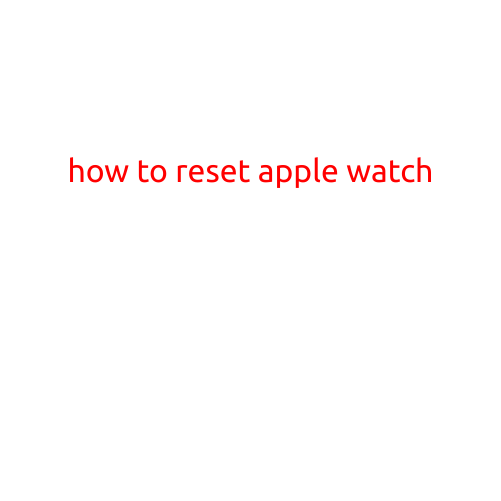
How to Relieve Sinus Pressure
Sinus pressure can be a real pain, causing discomfort, congestion, and fatigue. If you’re tired of feeling like you’re stuck in a constant cycle of stuffiness and pressure, there are several ways to relieve sinus pressure and get back to feeling like yourself. In this article, we’ll explore some of the most effective methods for alleviating sinus pressure and congestion.
Why Do Sinuses Get Pressured?
Before we dive into the relief methods, it’s essential to understand why sinuses get pressured in the first place. Sinuses are air-filled cavities in the face that help to humidify and warm the air we breathe. When the sinuses become inflamed or infected, the mucous membranes inside the sinuses swell and produce more mucus than usual. This can cause sinus pressure, congestion, and even pain.
Relief Methods
Steam Inhalation: One of the most effective ways to relieve sinus pressure is through steam inhalation. Boil some water, then lean over the pot with a towel covering your head and the pot. Inhale the steam for 5-10 minutes, taking deep breaths. You can also add eucalyptus oil or menthol to the water for added benefits.
Nasal Saline Irrigation: Nasal saline irrigation involves rinsing the nasal passages with a saline solution to loosen mucus and reduce swelling. You can use a neti pot or a squeeze bottle with a nasal spray tip. Mix one teaspoon of salt and one teaspoon of baking soda with 8 ounces of warm water.
Humidifiers: Dry air can exacerbate sinus pressure, so using a humidifier in your home can be incredibly helpful. Humidifiers add moisture to the air, helping to loosen mucus and reduce congestion.
Eucalyptus Oil: Eucalyptus oil has natural decongestant and anti-inflammatory properties. Add a few drops to your diffuser, inhale it directly from a cloth or handkerchief, or mix it with a carrier oil for a topical application.
Heat and Cold Therapy: Applying heat or cold packs to the affected area can help to relieve sinus pressure. Apply a warm compress to the sinuses for 5-10 minutes to loosen mucus, then switch to an ice pack for 5-10 minutes to reduce swelling.
Drink Plenty of Fluids: Staying hydrated is essential for thinning out mucus and promoting drainage. Drink plenty of water, herbal teas, and warm broth to help alleviate sinus pressure.
Try a Neti Pot: A neti pot is a device that allows you to rinse the nasal passages with a saline solution. Fill the pot with a mixture of water and salt, then tilt your head to the side and pour the solution into the top nostril. The solution will drain out of the other nostril, helping to loosen mucus and reduce congestion.
Consider Over-the-Counter Medications: If your sinus pressure is caused by allergies or a cold, over-the-counter medications like antihistamines, decongestants, and pain relievers may provide relief.
When to Seek Medical Attention
If your sinus pressure persists or worsens over time, it’s essential to seek medical attention. In some cases, sinus pressure can be a sign of a more serious underlying condition, such as a sinus infection or sinusitis. If you experience any of the following symptoms, seek medical attention:
- Thick, yellow or green mucus
- A headache or facial pain
- A fever over 102°F (39°C)
- Nasal congestion that persists for more than 7-10 days
- Loss of sense of smell or taste
Conclusion
Sinus pressure can be uncomfortable and debilitating, but there are many effective ways to relieve it. From steam inhalation to nasal saline irrigation, heat and cold therapy, and over-the-counter medications, there’s a relief method out there for everyone. If you’re experiencing persistent or severe sinus pressure, it’s essential to seek medical attention to rule out any underlying conditions. With the right treatment and self-care techniques, you can say goodbye to sinus pressure and hello to a life free from congestion and discomfort.





